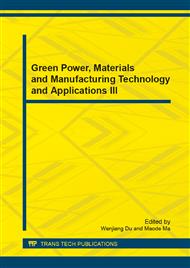p.671
p.677
p.682
p.687
p.691
p.695
p.700
p.705
p.708
Study on Smart Materials of Library Buildings
Abstract:
With the human society stepping into modern civilized information age, libraries which are continuously profound in their modernization, respect readers first, in order to meet humans demand, realize their value and pursuit their development which has become the goal to libraries for their development and value achievement. Gradually the concept of people-oriented is increasingly blended in library construction, document information service, business workflow and personnel management work. In the library construction work, it is significant to embody the humanistic care in the smart materials of library buildings and concern about the different reader groups physical and psychological requirements.
Info:
Periodical:
Pages:
691-694
Citation:
Online since:
January 2014
Authors:
Keywords:
Price:
Сopyright:
© 2014 Trans Tech Publications Ltd. All Rights Reserved
Share:
Citation:


